Search results for 'paper'
-
Gold Leaf Art Accessory Box –Monster【Free Shipping】
A Touch of Tradition with a Thrill of the Unexpected This accessory box is part of a unique series that blends over 450 years of Kanazawa gold leaf craftsmanship with the bold composition and vivid colors of Edo-period ukiyo-e. The artwork’s shimmering surface changes expression depending on the angle of light, transforming it into a dynamic art piece that feels as if it has stepped out of another world. This piece features a motif from “The Curious Tale of the Hair-Cutter” by Utagawa Yoshifuji, a beloved ukiyo-e artist of the late Edo period. The print whimsically depicts a mysterious creature drawn to women's hair—a playful and imaginative theme now beautifully reimagined with the elegance of Kanazawa gold leaf. Each box is meticulously handcrafted, making it a refined gift for art lovers or a memorable souvenir for those visiting Japan. Both practical and decorative, it offers a delightful way to bring a touch of Japanese art into everyday life. Learn More -
Gold Leaf Sake Cup "Suigetsu" -Ochoko-【Free Shipping】
[Sake Cup Infused with the Beauty of Hokuriku]
A collaboration with Echizen ware, a traditional craft from Fukui Prefecture. This exceptional piece features an ultra-thin lip—less than 1 millimeter thick—crafted entirely by hand using only the artisan's fingers, without trimming after wheel throwing, a feat once thought impossible in ceramics. To preserve the natural texture of the materials, genuine gold leaf is applied using lacquer as an adhesive. No topcoat is used, allowing the refined brilliance of the gold leaf to shine through to its fullest.
- - Ochoko -
This sake cup is designed to let you fully enjoy the clean, invigorating sensation of chilled sake. Its upward-flaring shape allows the sake to flow smoothly along the rim and into the mouth, enhancing the sharp, dry notes of the drink. The open, outward-curving form makes it especially suitable for dry sakes, such as honjozo. Delicate and gentle on the lips, the cup shimmers with genuine gold leaf. It evokes the experience of scooping moonlight reflected on water—offering a quiet moment of joy and elegance with each sip. Over time, as the cup is used, the gold leaf gradually wears along the natural contours of the surface, fading in a way that adds character and depth—transforming into a one-of-a-kind piece that becomes uniquely yours. By enjoying the harmony between sake and its vessel, you can indulge in a luxurious moment of personal reflection. Each piece comes in a custom-made wooden box. An ideal gift for sake enthusiasts or a thoughtful present, particularly for men who appreciate fine craftsmanship and good drink. Learn More$145.60 -
Gold Leaf Sake Cup "Suigetsu" -Small Ochoko-【Free Shipping】
[Sake Cup Infused with the Beauty of Hokuriku]
A collaboration with Echizen ware, a traditional craft from Fukui Prefecture. This exceptional piece features an ultra-thin lip—less than 1 millimeter thick—crafted entirely by hand using only the artisan's fingers, without trimming after wheel throwing, a feat once thought impossible in ceramics. To preserve the natural texture of the materials, genuine gold leaf is applied using lacquer as an adhesive. No topcoat is used, allowing the refined brilliance of the gold leaf to shine through to its fullest.
- - Small Ochoko -
A vessel designed to let you fully enjoy the crisp, refreshing taste of chilled sake. Its flared shape guides the sake smoothly along the rim, allowing the sharp, clean flavor to spread delightfully across the palate. This petite cup—perfect for a single sip—is especially recommended for fruity sakes such as ginjo-shu. Delicately smooth at the lip, the cup sparkles with genuine gold leaf. It evokes the image of scooping a moonlit reflection from the surface of water—an experience that brings a quiet, elegant joy to your heart. As time passes and you continue to use it, the gold leaf gradually blends with the natural contours of the cup, fading gracefully and developing a unique character—becoming a sake cup that is truly your own. It is a vessel that evolves with you, inviting you to enjoy the passage of time and the art of pairing sake with the perfect cup. Delivered in a special wooden box, it also makes a thoughtful gift for sake lovers or a refined present for someone special. Learn More$118.30 -
Gold Leaf Sake Cup "Suigetsu" -Kaori Sakazuki-【Free Shipping】
[Sake Cup Infused with the Beauty of Hokuriku]
A collaboration with Echizen ware, a traditional craft from Fukui Prefecture. This exceptional piece features an ultra-thin lip—less than 1 millimeter thick—crafted entirely by hand using only the artisan's fingers, without trimming after wheel throwing, a feat once thought impossible in ceramics. To preserve the natural texture of the materials, genuine gold leaf is applied using lacquer as an adhesive. No topcoat is used, allowing the refined brilliance of the gold leaf to shine through to its fullest.
- -Kaori Sakazuki-
A sake cup designed to fully enjoy the aroma of Japanese sake. With a gently narrowing mouth, this cup is shaped to trap the sake’s aroma within its bowl—much like a wine glass. As you slowly tilt it to your lips, the fragrant bouquet of the sake gently rises, allowing you to savor every nuance. It is the perfect vessel for fruity ginjo-style sake. The delicate and smooth rim enhances the drinking experience, while the brilliance of genuine gold leaf adds elegance. Like scooping the reflection of the moon from the water’s surface, this cup invites you to indulge in moments of serene delight. Over time, as you use it, the gold leaf gently conforms to the contours of the cup, gradually softening and fading in a way that enriches its character—turning it into a truly personal vessel. Enjoy the changing beauty through the years, and the exquisite pairing of sake and its vessel will elevate your private moments to pure indulgence. The cup comes in a custom wooden box, making it a perfect gift for sake lovers or a special present for someone dear. Learn More$145.60 -
Gold Leaf Sake Cup "Suigetsu" -Umami Sakazuki-【Free Shipping】
[Sake Cup Infused with the Beauty of Hokuriku]
A collaboration with Echizen ware, a traditional craft from Fukui Prefecture. This exceptional piece features an ultra-thin lip—less than 1 millimeter thick—crafted entirely by hand using only the artisan's fingers, without trimming after wheel throwing, a feat once thought impossible in ceramics. To preserve the natural texture of the materials, genuine gold leaf is applied using lacquer as an adhesive. No topcoat is used, allowing the refined brilliance of the gold leaf to shine through to its fullest.
- – Umami Sakazuki –
A larger-than-average sake cup designed to enhance the umami of sake—just as its name suggests. Its wide opening allows more of the poured sake to come in contact with air, softening the flavor and drawing out a deeper, more mellow character. This cup is ideal for savoring junmai sake varieties rich in umami, such as unfiltered genshu, unpasteurized namazake, or aged jukuseishu and koshu, which have been matured to bring out the full flavor of the rice. Delicate and smooth on the lips, this vessel—adorned with genuine gold leaf—offers the refined experience of sipping fine sake as though scooping the moon’s reflection from the water’s surface. Over time, the gold leaf will gently blend with the surface, gracefully fading along the cup’s contours to develop a unique patina. This evolving transformation turns the cup into a one-of-a-kind piece—an heirloom that reflects your personal journey. Enjoy a luxurious moment of indulgence as you explore the harmony between fine sake and a beautifully crafted vessel. Delivered in a custom-made wooden box. An excellent gift for sake enthusiasts or as a refined present for someone special. Learn More$145.60 -
Fortune Chopstick Rests – Set of 5 Lucky charm【Free Shipping】
Perfect for Special Occasions or as a Gift This is a set of five lucky charm chopstick rests, each adorned with gold leaf and featuring auspicious motifs. A collaboration between Kutani ware, a traditional craft from Ishikawa Prefecture, and genuine gold leaf. This is an exclusive, original set from Hakuichi, combining tradition with good fortune. These versatile pieces can also be used as brush rests or paperweights. ◇ Daruma ◇ A symbol of family safety, good health, and victory. Daruma from Kinjiro is especially believed to bring financial fortune. ◇ Folding Fan ◇ The fan’s spreading shape symbolizes expanding prospects and a bright future. ◇ Gourd (Hyotan) ◇ Said to invite happiness and success, while also serving as a charm for protection and good health. ◇ Waves and Plovers (Nami Chidori) ◇ Plovers (chidori) are considered symbols of victory and goal achievement, as “chidori” can be interpreted as “taking a thousand.” ◇ Sea Bream (Tai) ◇ Associated with the word “medetai” (auspicious/celebratory), the sea bream symbolizes good fortune and harmony with others. Learn More -
Kanazawa Mizuhiki Panel – Crane and Tortoise [Pink]【Free Shipping】
This art panel depicts cranes and turtles—symbols of longevity—rising gracefully upward alongside gold leaf.
This art panel blends traditional techniques such as Kanazawa gold leaf, Kanazawa Mizuhiki, and hyōsō (mounting), with a design suited to today’s lifestyle. Its simple and lightweight construction makes it easy to display casually in spaces like the living room. The "Kanazawa Mizuhiki – Crane and Turtle" series expresses the uplifting image of cranes and turtles—symbols of longevity—rising gracefully with shimmering gold leaf. Enjoy this piece in your home as a symbol of good fortune and a celebration of tradition in everyday life.
Learn More$245.70 -
Kanazawa Mizuhiki Panel – Crane and Tortoise [Blue]【Free Shipping】
This art panel depicts cranes and turtles—symbols of longevity—rising gracefully upward alongside gold leaf.
Crafted using the traditional Kanazawa Mizuhiki technique, it features auspicious motifs of cranes and turtles. The elegant combination of deep blue and gold leaf blends beautifully with modern interior design. By harmonizing traditional techniques such as Kanazawa gold leaf, Kanazawa Mizuhiki, and hyōsō (mounting art), the piece is designed in a style that allows it to be easily displayed in everyday spaces like the living room.
Learn More$245.70 -
Kanazawa Mizuhiki Panel – Fūryū [White]【Free Shipping】
This art panel combines traditional Japanese techniques such as Kanazawa gold leaf, Kanazawa mizuhiki, and hyōsō (mounting methods used in hanging scrolls), reimagined to suit contemporary living spaces. Designed to suit modern living spaces, this art panel features a thoughtfully considered size and lightweight construction—making it easy for even a single person to hang, such as a woman decorating her own space. It combines traditional Japanese techniques such as Kanazawa gold leaf, Kanazawa Mizuhiki, and hyōsō (traditional mounting), creating a refined blend of craftsmanship and contemporary style. The piece titled “Kanazawa Mizuhiki Fūryū” incorporates a tamakmusubi (decorative knot) representing nanten berries—often used in simple Mizuhiki designs—along with motifs of pine, symbolizing good fortune and longevity.
Learn More$245.70 -
Kanazawa Mizuhiki Panel – Fūryū [Crimson]【Free Shipping】
This art panel combines traditional Japanese techniques such as Kanazawa gold leaf, Kanazawa mizuhiki, and hyōsō (mounting methods used in hanging scrolls), reimagined to suit contemporary living spaces. The vivid vermilion background beautifully enhances the brilliance of the gold leaf and highlights the graceful flow of white mizuhiki cords. Accents of tightly knotted cords represent nanten berries (a symbol of good fortune), along with pine motifs, both commonly featured in elegant mizuhiki arrangements.
Learn More$245.70

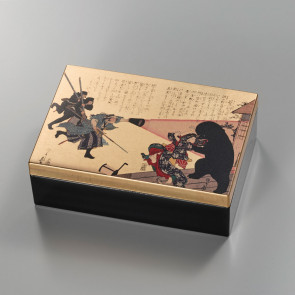
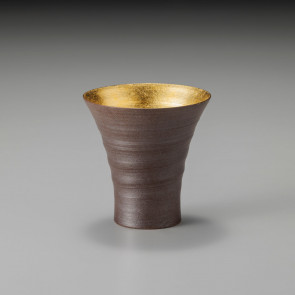
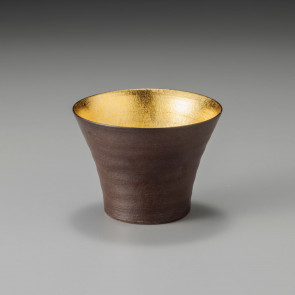
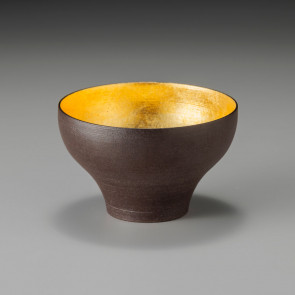
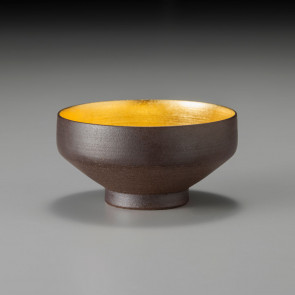
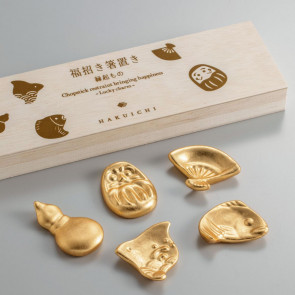
![Kanazawa Mizuhiki Panel – Crane and Tortoise [Pink]【Free Shipping】](https://hakuichi.com/media/catalog/product/cache/1/small_image/295x/040ec09b1e35df139433887a97daa66f/_/1/_1_21_2.jpg)
![Kanazawa Mizuhiki Panel – Crane and Tortoise [Blue]【Free Shipping】](https://hakuichi.com/media/catalog/product/cache/1/small_image/295x/040ec09b1e35df139433887a97daa66f/_/b/_buru-_1.jpg)
![Kanazawa Mizuhiki Panel – Fūryū [White]【Free Shipping】](https://hakuichi.com/media/catalog/product/cache/1/small_image/295x/040ec09b1e35df139433887a97daa66f/_/1/_1_21.jpg)
![Kanazawa Mizuhiki Panel – Fūryū [Crimson]【Free Shipping】](https://hakuichi.com/media/catalog/product/cache/1/small_image/295x/040ec09b1e35df139433887a97daa66f/_/1/_1_20.jpg)

